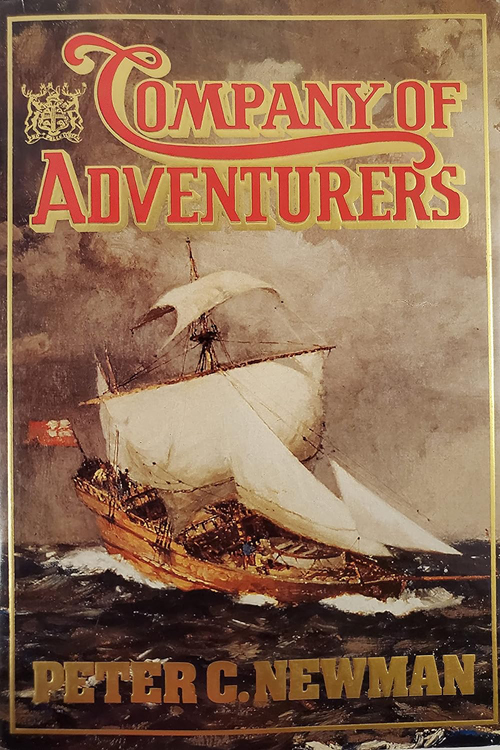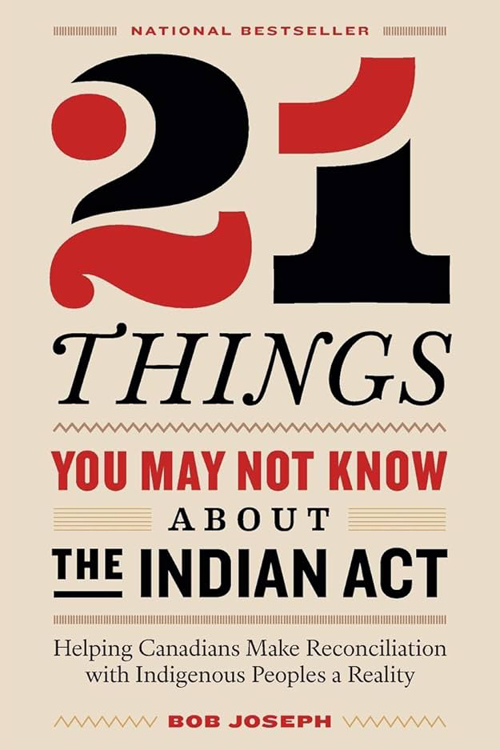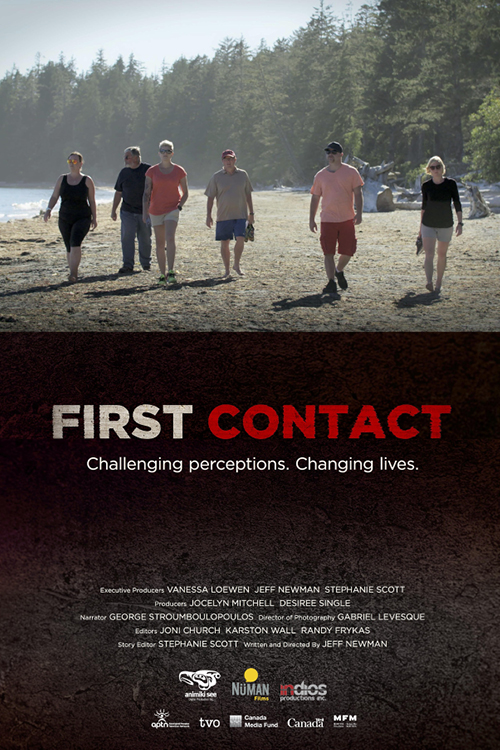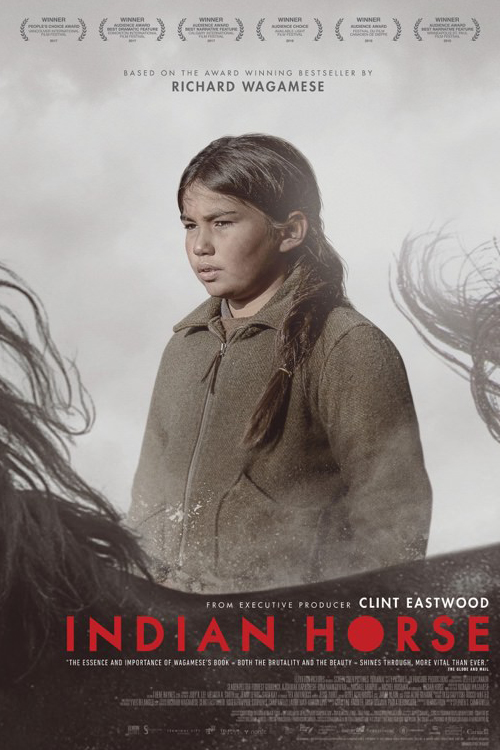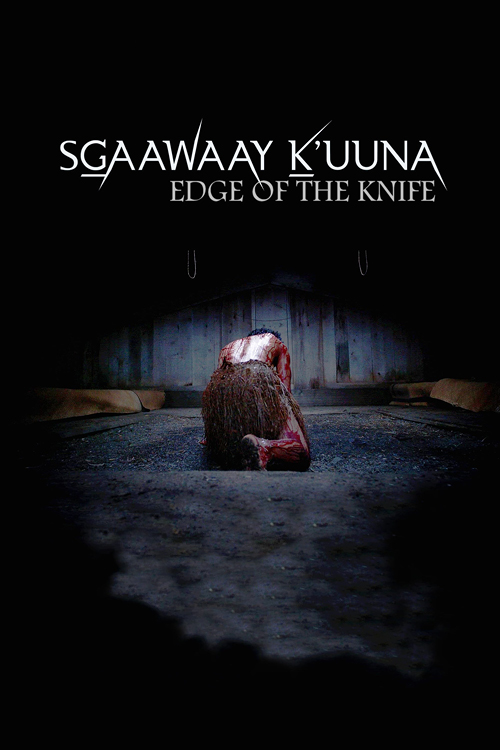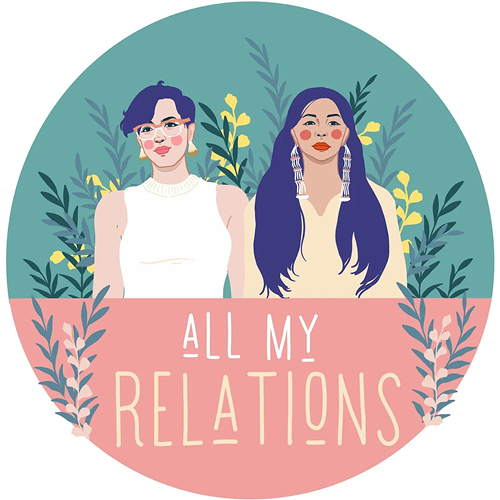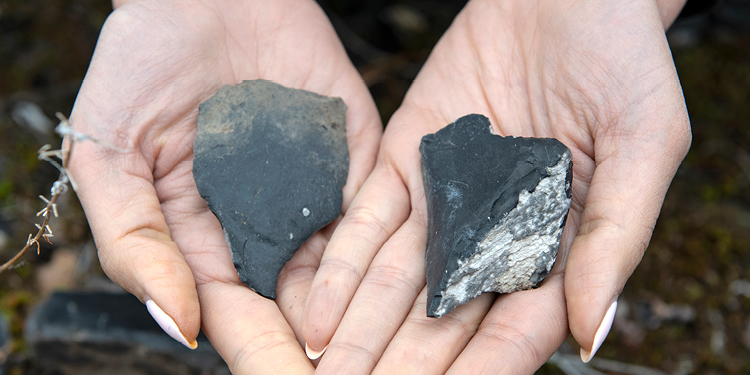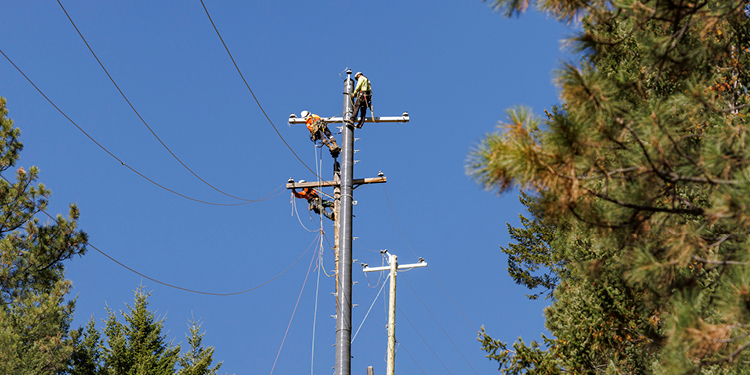3 ways to get to know Indigenous culture and why it’s a great idea
June 17, 2020
Updated May 31, 2024
June is National Indigenous History Month, a time for all Canadians to learn about and celebrate the cultures and histories of First Nations, Métis and Inuit. Interested but not sure where or how to start? We reached out to a few FortisBC employees who have strong relationships with Indigenous communities with some great recommendations to share.
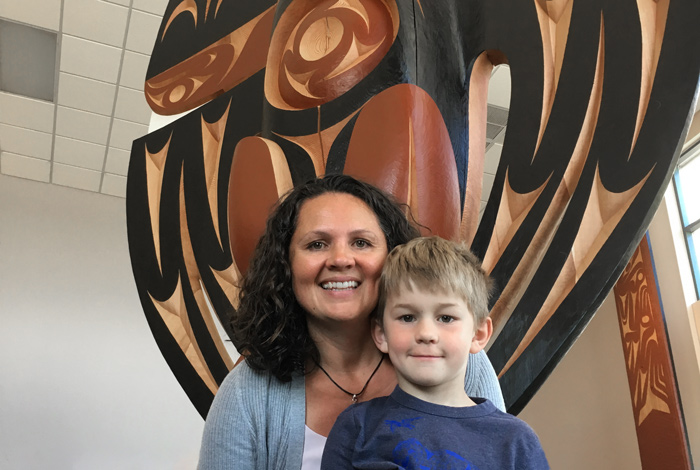
Here, Carmen and Joshua stand in front of yuxwule’ or the Welcome Figure by Stz’uminus artist John Marston at Ladysmith Secondary School.
1. Exploring content from your local Nation
When the BC Elders Gathering in Duncan opened in 2018, in the Hul’qumi’num language of the Coast Salish people, Carmen LeBlanc, community and Indigenous relations manager, was moved when her non-Indigenous son was able to provide her with a basic translation.
His learning was the result of Scia’new First Nation Elders generously sharing their time and knowledge at local schools with both the Indigenous and non-Indigenous youth. This important work builds trust and familiarity, deepens respect and increases understanding.
There’s an incredible amount of understanding and listening that needs to happen.
Carmen LeBlanc, community and Indigenous relations manager
For 10 years, Carmen has been working on behalf of FortisBC to build relationships with Indigenous communities on Vancouver Island, engaging Nations with the work that takes place within their Territories and working to build greater understanding and meaningful connections. For her, building greater awareness is the foundation to stronger communities for everyone.
“There’s an incredible amount of understanding and listening that needs to happen. Many Nations have great websites that explain their unique history and culture; it’s also a good way to better understand what’s important to each community.”
She recommends following public-facing Facebook groups and the social media feeds of local Nations and community leaders.
Carmen’s National Indigenous History Month recommendations:
- FirstVoices is an internationally recognized online platform for Indigenous communities to share and promote their languages, oral cultures and linguistic histories.
- Plan a trip to Squamish Lil’wat Cultural Centre, the heart of Whistler’s authentic Indigenous experience.
- Explore indoor and outdoor exhibits at NK’MIP Desert Cultural Centre.
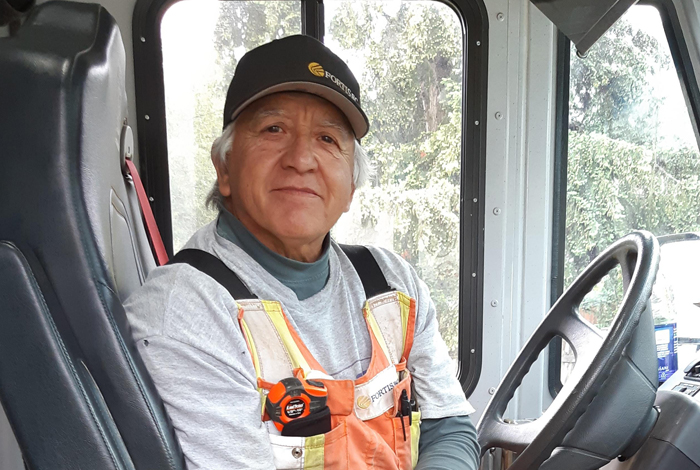
Tom Charlie, retired crew leader, recommends attending cultural events like powwows or other cultural events.
2. Experience Indigenous culture first hand
Tom Charlie, retired crew leader, is a member of the Cowichan Tribe, a proud grandpa of five and a 24-year veteran of FortisBC’s gas operations in Nanaimo. Tom is dedicated to preserving his culture for future generations so that everyone feels safe and valued.
Attend a powwow or other cultural activities. Most of all please be patient and more understanding.
Tom Charlie, retired crew leader
For Tom, getting to know the Indigenous culture in your community is a gateway for patience and understanding. He writes:
“I am grateful to be here at FortisBC. I really enjoy my job and the people I work with. I am maybe only one of two Indigenous men that I know to be working in construction. Very happy to see FortisBC reaching out to our People and non-Indigenous people. A big step in all people becoming one. We should live, work, walk and play together as one. A lot of very sensitive subjects still need to be addressed. Its NOT going to happen over night. I really encourage my colleagues to watch the training provided by FortisBC. A very big step in the right direction. Well done, FortisBC. Attend a powwow or other cultural activities. Most of all please be patient and more understanding. It's been a tough go for our people. We have a long way to go.”
Tom’s National Indigenous History Month recommendations:
- Take self-guided tour of the Maplewood Flats Conservation Area, created by Wild Bird Trust of BC, home to a Tsleil-Waututh Nation ancestral village site.
- Connect with your local Friendship Centre.
- Participate in a shared cultural journey through Indigenous Tourism BC to protect and revitalize living Indigenous cultures.
[existing Bruce Falstead image]
Bruce Falstead, Indigenous initiatives manager, recommends exploring books, TV and film.
3. Reading books, watching movies and exploring creative content
What’s the number one reason to learn about Indigenous history and cultures?
“It’s fascinating,” said Bruce Falstead, Indigenous initiatives manager. “Do it for your own enjoyment—people travel from around the world to see what we have in our own backyard. So much is still intact.”
Bruce works closely with Indigenous communities on behalf of FortisBC to make sure the work done in their communities meets their expectations and provides opportunities for their members. He’s worked in this field for 30 years and was instrumental in developing FortisBC’s Statement of Indigenous Principles. He’s pleased with the progress in recent years but sees that much more needs to be done.
People travel from around the world to see what we have in our own backyard. So much is still intact.
Bruce Falstead, Indigenous initiatives manager
“But don’t let any of the issues cloud your enjoyment; it’s a wonderful rich history.”
A history buff at heart, he started exploring his own Métis background after reading the books of Peter C. Newman, famous Canadian editor for Maclean’s Magazine.
“Reading his books really got me thinking.”
He also highly recommends the APTN television series First Contact where six Canadians go on a 28-day journey intended to challenge their beliefs and shed a light on the true Indigenous experience.
Bruce encourages people to explore the many works of fiction and non-fiction that reflect a history as adventurous, romantic and heroic as the much-celebrated history of our southern neighbours.
Bruce’s National Indigenous History Month recommendations:
| Read this if you want to know more about the unsung heroes of the world’s largest private commercial empire, the Hudson’s Bay Company. | |
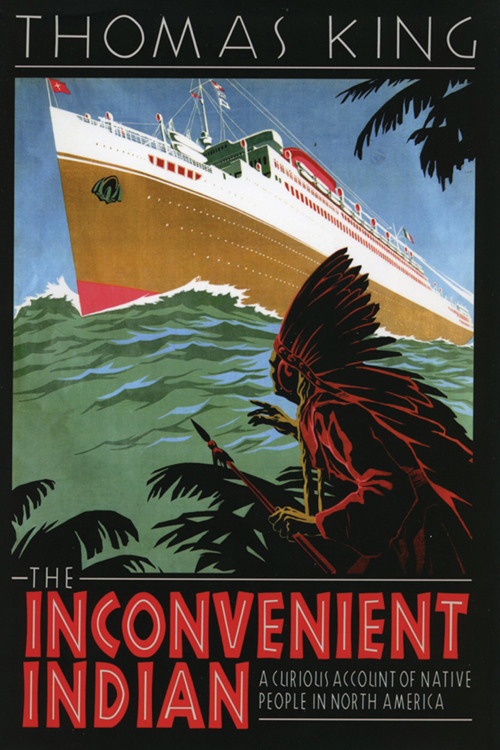 | The Inconvenient Indian: A Curious Account of Native People in North America, Thomas King | Read this if you want to learn about the relationship between Indigenous and non-Indigenous people and what it means to be “Indian” in North America. |
| Read this to understand why learning about the Indian Act’s cruel legacy is essential in moving toward Reconciliation. | |
| Watch this if you want to see Canadians embark on a unique exploration of Indigenous Canada and have their lives turned upside down. | |
| Watch this to see life in an Indigenous residential school and how a boy taught himself hockey as a salvation, eventually leading him to the pros. | |
| Watch this if you like movies about pride, tragedy and being pushed to the brink in this telling of one of Haida’s most popular stories, Gaagiixiid (the Haida Wildman). | |
 | Listen if you want to learn, unlearn and better understand our shared story as told by Indigenous voices. | |
| Listen if you want to hear an intimate conversation with one of Turtle Island’s most vocal Indigenous women, Kahentinehtha Horn. | |
| Listen if you like to think critically about issues facing Indigenous communities and are always looking for opportunities to listen and learn. |
Our approach to honouring Indigenous People, communities and culture
FortisBC is committed to building relationships that are mutually beneficial. We know we still have a lot to learn, and we are honoured when we are made aware of other views, perspectives, cultures, histories and experiences. When Indigenous Peoples take the time to share with us, we know that it’s a privilege, and we’re working hard to ensure that the guidance and teachings are treated with the care and respect they deserve.
At FortisBC, we believe in active and meaningful relationships with Indigenous Peoples and communities. Our gas and electricity infrastructure crosses more than 150 Traditional Territories and our company provides service to 58 First Nation communities. As a CCIB Partnership Accreditation in Indigenous Relations (PAIR) Committed Silver-level member, we strive for continuous improvement in leadership actions, business development, employment and community relationships. Learn more about how we partner with Indigenous communities.

